When it comes to construction work, safety is a paramount concern, and part of that involves being appropriately clothed for all possible weather conditions. It's crucial to think beyond the standard protective gear, like hard hats and safety boots when suiting up for the day. In changeable weather, the right clothing can provide the needed comfort, safety, and resilience to face each day with confidence and ease.
What's the secret all seasoned operational workers swear by? An all-weather rain gear set that's perfect for construction workers. Whether it's heavy downpour, light drizzle, or an unexpected storm, this article will guide you to choose the best rain gear, how to maintain them, and why they are an essential addition to your regular safety attire. Embark on this enlightening journey and discover how to stay dry and comfy while not compromising on safety and productivity!
Importance of All-Weather Rain Gear
The importance of all-weather rain gear cannot be overstated, particularly for those who work outdoors in unpredictable weather conditions, be it construction workers, festival staff, or even cyclists. These hardy outdoorsmen and women often have to face the harsh and ever-changing elements, making it essential to have proper gear to shield them from inclement weather. Let's navigate through some key benefits of all-weather rain gear.
Protection Against Elements
First and foremost, the right rain gear provides protection against the elements. Depending on the occupations or activities, users may encounter a variety of weather conditions, including but not limited to heavy rainfall, harsh winds and even heatwaves.
- Rain: Well-designed gear can ward off rain, keeping the user dry. Wet and soggy clothes can hamper movement and make anyone feel uncomfortable, enabling the person to focus better on their tasks at hand.
- Wind: Quality rain gear acts as a windbreaker, preventing the chill from cutting through the gear and reaching your skin.
- Heat: Some specialised rain gear comes with ventilation features, allowing for better breathability and cooling in hot conditions.
Enhanced Job Performance
When workers are dry and comfortable, it directly translates to enhanced job performance. All-weather gear provides comfort against adverse weather, reducing disruptions and enabling wearers to focus on their tasks. Despite a torrential downpour, having appropriate rain gear allows any job to proceed without major interruptions, ensuring that deadlines are met and productivity remains high.
Health and Safety
Health and safety are of paramount importance in any weather condition and proper rain gear further enhances this. Wet clothes can lead to chills and susceptibility to cold, potentially leading to hypothermia in severe conditions. Workers in damp clothes are also at a risk of skin conditions, like chafing and skin rashes. Not to mention, wet surfaces increase the risk of slips, trips, and accidents. However, with the right protective gear, these risks are vastly reduced, ensuring workers' safety and overall well-being.
As we can glean from the points above, all-weather rain gear serves as a vital piece of equipment that aptly braves the elements, boosts job performance and safeguards health and safety. The benefits offered by such gear undoubtedly advocate their importance in an outdoor setting, making them a crucial investment for workers subjected to changing weather conditions. Having acknowledged this brings us one step closer to defining a safer, productive environment for the outdoor workforce and enthusiasts.
General Features of Good All-Weather Rain Gear
Rain, albeit a natural phenomenon, has been a challenge for outdoor enthusiasts and commuters alike for millennia. From hunters in rainforests to cyclists braving an urban drizzle, everyone needs one essential piece of kit - an effective all-weather rain gear. But what makes a perfect rain gear? Simply opting for any waterproof cover might not cut it. Here are some core features to look for when shopping for your next all-weather essential.
Waterproof
Of course, the fundamental quality of any rain gear is its waterproof ability. It's imperative that the rain gear keeps you dry during a shower, hence it must efficiently repel water, not absorb it. Superior quality rain gear usually features a hydrophobic coating that not only repels water but ensures you stay dry inside.
Durability
The resilience of rain gear rests on the premise that it must stand up to whatever Mother Nature throws its way. From pelting hard rain to brisk winds and everything in between, your all-weather gear needs to be robust. Look for materials that offer the long-lasting durability you need. Often, these are high-denier fabrics with reinforced seams and a strong water repellent coating.
Comfort
As you'd imagine, there's little point in staying dry if your gear weighs you down or hinders your movement. Ensure that your gear is lightweight and offers good ease of movement. Moreover, opt for a fit that doesn't limit your mobility but still offers comprehensive protection from downpours.
Temperature Regulation
How many times have you felt stuffy or overly warm inside your rain gear? A perfect ensemble balances waterproofing and breathability to counter this. It prevents rain from entering while letting your perspiration escape. This optimal ventilation prevents overheating and thus helps in regulating the body temperature.
Visibility
Lastly, an often overlooked aspect, especially for bikers, cyclists, or pedestrians, is the visibility offered by your all-weather rain gear. Ideally, your gear should come with a luminous or reflective stripe to increase recognition in low-light conditions, ensuring your safety despite inclement weather.
All in all, shopping for all-weather rain gear is about striking that balance between staying dry, maintaining comfort, and ensuring durability. Remember these essential features next time you're on the hunt for some new gear, and you'll be well-prepared for anything the heavens have to throw at you!
How to Choose the Best All-Weather Rain Gear for Construction Workers
Choosing the right all-weather rain gear for construction work is a vital task. Informal research and anecdotal evidence suggest that working on a construction site can be challenging and relentless. The nature of tasks often exposes workers to harsh, all-weather conditions, making protective gear a necessity. But how can one ensure they are getting the best, most appropriate gear? This guide aims to help you identify the key aspects to consider when choosing the perfect all-weather rain gear for construction work.
Type and Extent of Construction Work
The type and extent of construction work significantly influence the gear you require. You need to assess the demand of your work and choose gear that caters to your specific needs.
Here are a few factors to consider:
- Intensity of Work: If your work requires heavy lifting and extensive physical activities, you should opt for rain gear made from lightweight but durable materials.
- Working Hours: Long hours of exposure to the weather demand gear that provides optimum protection. For night shifts, gear with high-visibility features would be a smart choice.
Consider Severity of Weather Conditions
The harshness of weather conditions that you expose yourself to is a primary consideration while selecting gear.
- Cold Conditions: Look for gear that offers insulation to combat low temperatures.
- Rainy Conditions: Opt for waterproof gear which also allows breathability to avoid dampness and discomfort.
Comfort and Fit
Comfort and fit should never be discounted while choosing rain gear. Uncomfortable gear can lead to restraint in movement and compromise on your productivity.
- Ensure that the gear fits you well. Loose or tight fitting can impede mobility.
- Check for padding and support in areas that often carry heavy weights.
Budget Consideration
Quality comes with a price, but budget-friendliness doesn't always mean compromise on quality. It's paramount that you allocate a reasonable budget for your gear, keeping in mind its long-term durability and reliability.
Remember, the best all-weather rain gear for construction workers should seamlessly combine safety and comfort, and it should be resilient enough to withstand the harshest of weather conditions. In essence, it must feel like a worthwhile investment into your safety and well-being. Don't be hesitant to invest in something that ensures your safety — your life is worth every penny. Overall, your gear should work for you, not against you.
Make sure the rain gear you choose ticks off all these aspects. After all, construction work is challenging enough; having the right gear should make you feel adept and protected against the elements.
Finally, always remember: Safety and comfort first!
Maintenance of All-Weather Rain Gear
In the modern adventurer's arsenal, having all-weather rain gear can be pivotal. But owning the gear itself isn't enough. It's of the utmost importance to maintain it in excellent condition to serve the purpose effectively. And just like any other significant investment, rain gear needs regular upkeep.
Regular Cleaning
Taking proactive cleaning measures is beneficial for the longevity and functionality of your all-weather gear. The cleaning process differs depending on the material, but as a general rule, you should:
- Address spills and stains immediately to prevent them from setting. Wiping with a damp cloth usually does the trick.
- Wash your gear periodically, especially after extreme weather conditions. This helps remove grime or residues that could compromise the material's quality over time.
- Mind the manufacturer's guidelines for washing and drying. Some gear can handle machine washing, but others may require a gentle hand wash.
- Avoid harsh detergents, chlorinated bleach, and fabric softeners, as they can degrade the material and reduce its effectiveness.
Proper Storage
Correct storage can mean the difference between gear that lasts for years and gear that needs replacing after a season. Following these storage tips can help preserve your all-weather rain gear:
- Store your gear in a clean, dry location. Avoid damp places to deprive mold and mildew of their breeding grounds.
- Ensure the gear is completely dry before storing it. Dampness can promote the growth of fungus and bacteria, causing unpleasant odors and potential health issues.
- Avoid direct sunlight and extreme temperatures. These can cause color fading and material degradation, respectively.
Periodical Inspection for Wear and Tear
Regular inspections of your gear can help identify early signs of wear and tear that might affect its performance:
- Check for loose seams and threads. These can allow water to infiltrate, defeating the purpose of waterproof gear.
- Inspect for discoloration, as this could suggest material degradation, compromising the gear's functionality.
- Look for cuts or punctures. These might not only let in water but also weaken the material's integrity, making it prone to further damage.
Remember, prevention is better than a cure. Act promptly when signs of damage are detected. Sometimes, minor repairs would work the charm, but other times, it might be time to retire your old gear and invest anew.
Keeping your all-weather rain gear in top shape is no small task, but the benefits are worth the effort. It's easier to face the elements when you have reliable, well-maintained gear to shield you. So, prioritize the maintenance of your all-weather rain gear, and keep enjoying your adventurous pursuits, come rain or shine!
Conclusion
Embracing the right all-weather rain gear is not about convenience alone– it’s fundamentally about ensuring your safety and enhancing your performance, no matter how fierce the weather gets. And while choosing the best fit incorporates various factors, from the type of work you'll be doing to budget considerations, a gear's quality and ability to protect you from the elements should always be prioritized.
Companies like Hurricane Raingear excel in offering industry-grade rain gear. They understand the essence of infusing functionality with comfort, and their products are a testament to that, setting a high standard in all-weather clothing. For those braving the outdoors in their daily work routines, Hurricane Raingear offers dependable protection that fortifies against the harsh elements, while ensuring your comfort and mobility are never compromised.
Remember to care for your gear as you would any investment. Regular cleaning, proper storage, and timely inspections add years to its lifespan and ensure it continues to provide you with optimal protection when you need it most. Step into the future of all-weather protection with Hurricane Raingear– because when it rains, it pours, and you deserve to stay dry and thrive.
Frequently Asked Questions
-
What are the key features to look for in all-weather rain gear for construction workers?
Key features to look for in all-weather rain gear for construction workers include waterproof and breathable materials, sealed seams, adjustable cuffs and hoods, reinforced knees and elbows, reflective strips for visibility, and pockets for storage.
-
Which brands offer the best all-weather rain gear for construction workers?
Some popular brands that offer the best all-weather rain gear for construction workers are Carhartt, Columbia, Helly Hansen, Dickies, and Marmot.
-
Are all-weather rain gear for construction workers expensive?
The price of all-weather rain gear for construction workers can vary depending on the brand, quality, and additional features. While some high-end brands may be more expensive, there are also affordable options available in the market.
-
Can all-weather rain gear be used in hot climates?
Yes, all-weather rain gear can be used in hot climates. Look for rain gear made from breathable materials with ventilation options to prevent overheating and ensure comfort while working.
-
How should all-weather rain gear be maintained?
To maintain the performance and longevity of all-weather rain gear, it is recommended to follow the manufacturer's care instructions. Generally, this includes machine-washing with mild detergent, avoiding fabric softeners, and drying on a low heat setting or air drying.



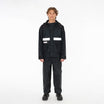



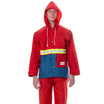


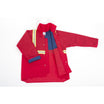

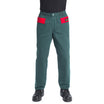



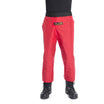






Leave a comment
This site is protected by hCaptcha and the hCaptcha Privacy Policy and Terms of Service apply.